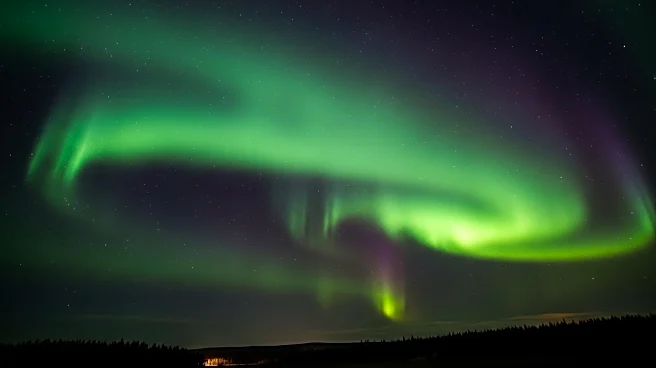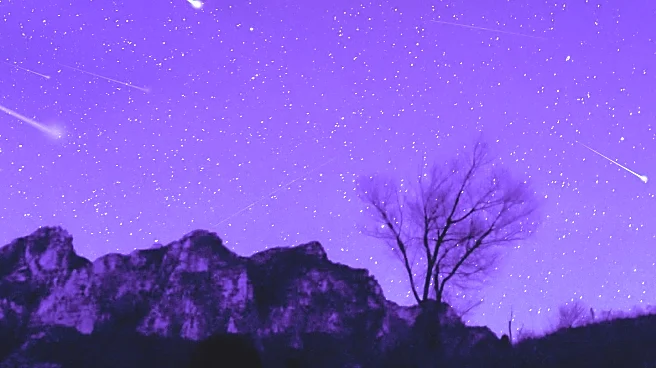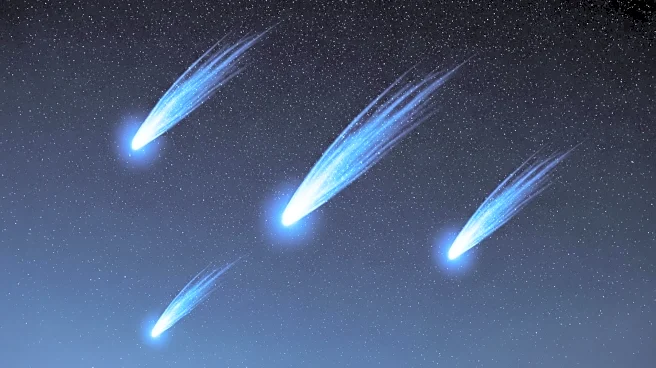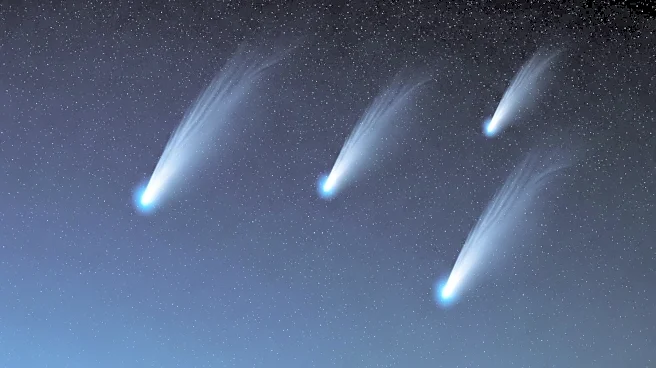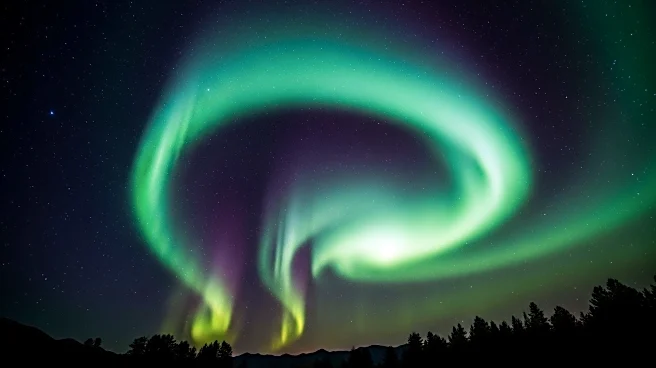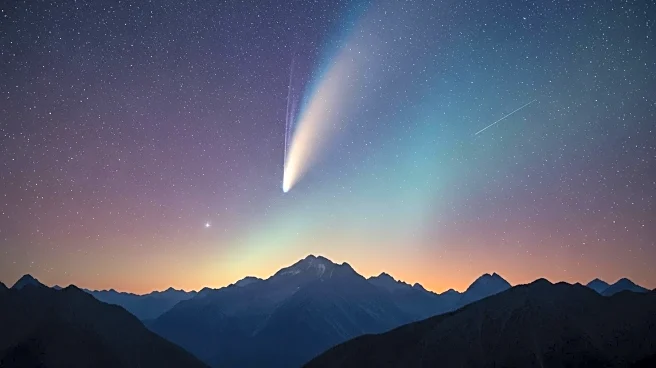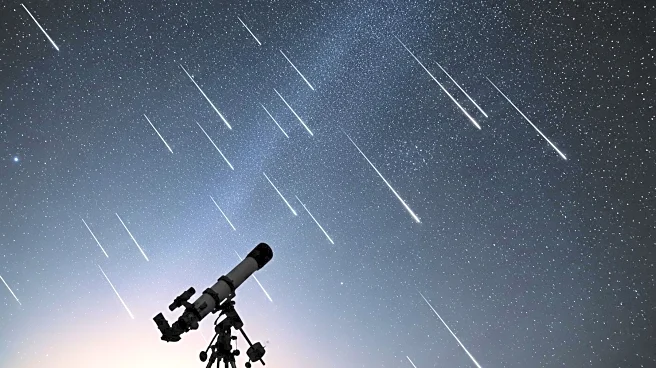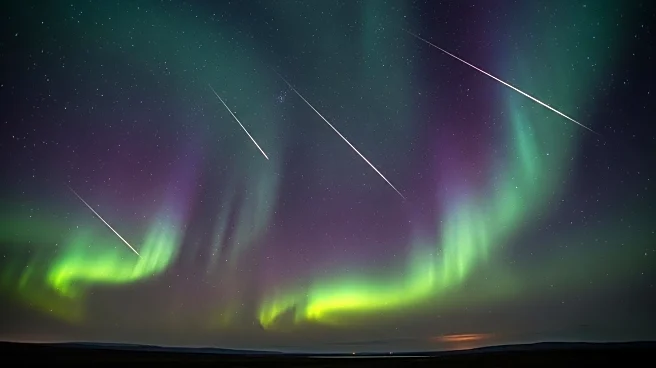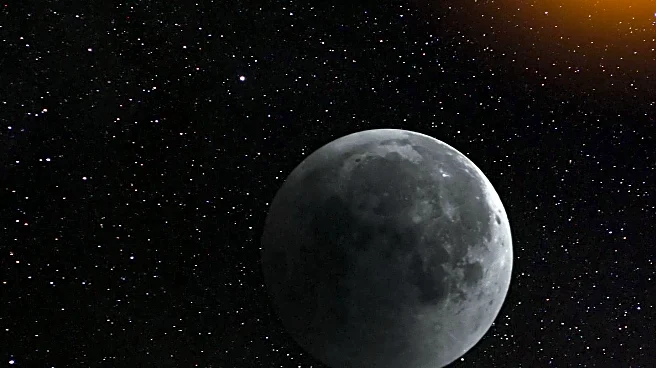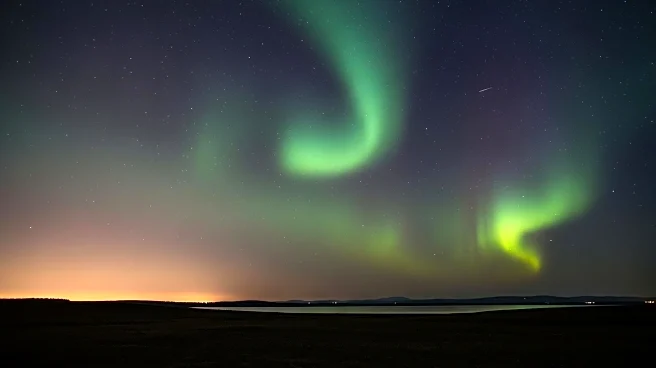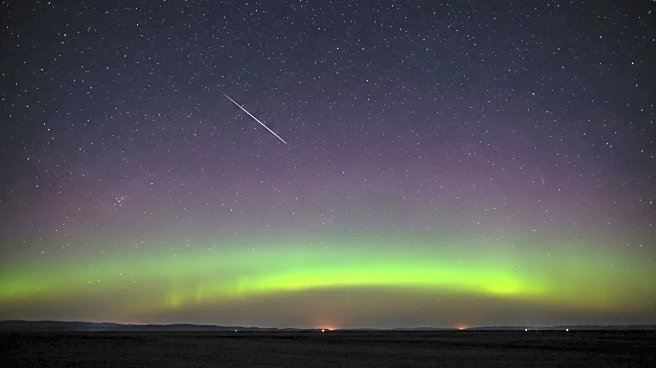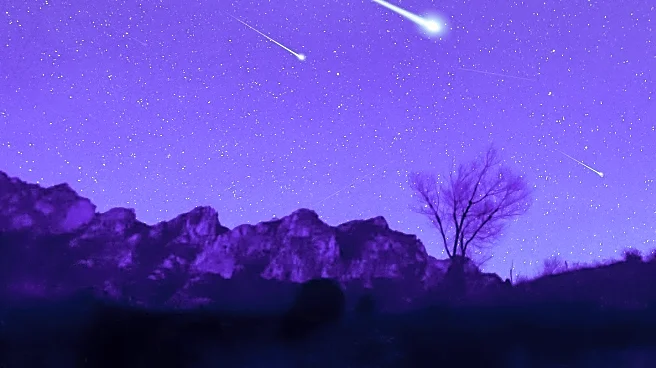What is the story about?
What's Happening?
The National Oceanic and Atmospheric Administration's (NOAA) Space Weather Prediction Center has issued a warning for a G3 (strong) geomagnetic storm expected to occur on September 30, 2025, lasting into the morning of October 1. This storm is the result of a coronal mass ejection (CME) from recent solar flares, including an M6.4-class X-ray flare on September 29 that caused an R2 radio blackout. The storm is anticipated to produce dramatic aurora displays at high latitudes. Additionally, two comets, C/2025 R2 (SWAN) and C/2025 K1 (ATLAS), are becoming visible, with SWAN potentially brightening to a magnitude of 4 by October 21, making it visible to the naked eye under dark skies. The Southern Taurids meteor shower is also active, although it is expected to be weak.
Why It's Important?
The geomagnetic storm could have significant implications for both technology and natural phenomena. Strong geomagnetic storms can disrupt satellite operations, GPS systems, and power grids, posing challenges for industries reliant on these technologies. The potential for visible auroras at mid-latitudes offers a rare opportunity for skywatchers to observe this natural spectacle. The visibility of comets and meteor showers adds to the celestial events that can be observed, providing educational and recreational opportunities for the public. These events highlight the importance of monitoring space weather and its potential impacts on Earth.
What's Next?
Skywatchers are advised to monitor real-time alerts from NOAA's Space Weather Prediction Center and use aurora apps to track the storm's progress. Observers in mid-latitudes should be prepared to look for auroras after midnight on September 30. The visibility of comets and meteor showers will continue to evolve, with the Draconid meteor shower peaking on October 8-9. The public is encouraged to take advantage of these celestial events by finding locations with minimal light pollution and clear skies.
Beyond the Headlines
The occurrence of such geomagnetic storms underscores the need for robust infrastructure to mitigate potential disruptions to technology and power systems. It also highlights the interconnectedness of space weather and terrestrial systems, emphasizing the importance of continued research and investment in space weather prediction capabilities. The cultural and educational value of observing celestial events can foster greater public interest in astronomy and science.
AI Generated Content
Do you find this article useful?
